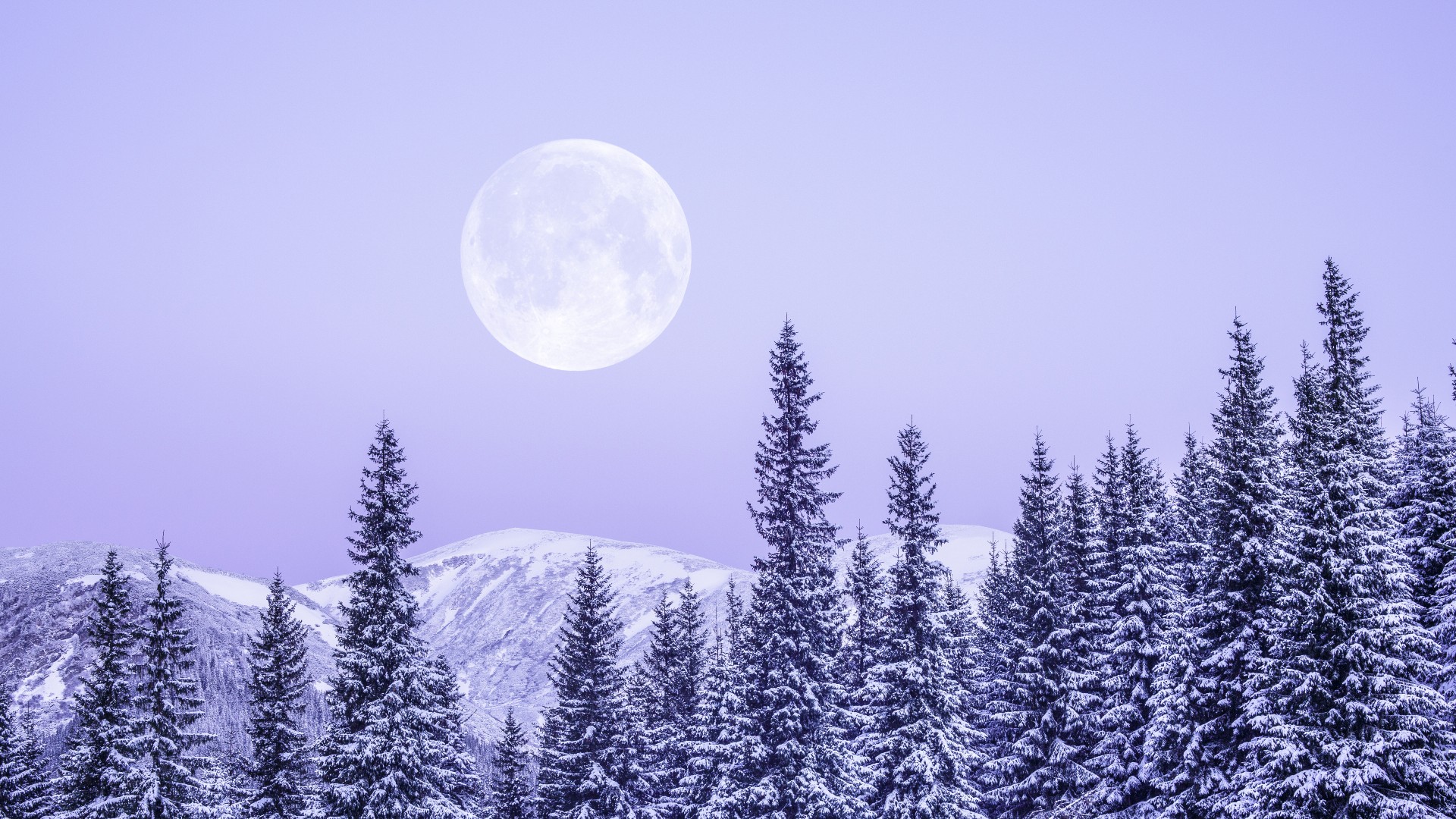The full 'Snow micromoon' rises Feb. 5. Here's how to see it.
The full moon will be quite distant from Earth on Feb. 5, making it a 'micromoon'.

When it rises on Feb. 5, the full moon will appear smaller than average because it is at one of its most distant points in its elliptical path around Earth.
This positioning makes February's "Snow Moon'' a micromoon, a full moon that is visible when the moon is at one of its greatest distances from the planet. In astronomical terms, this is called apogee. According to EarthSky magazine, the February micromoon will be 252,171 miles (405,830 kilometers) from Earth, compared with the average distance of 239,000 miles (384,400 km).
Though it's hard to tell without a side-by-side comparison, the full moon at apogee actually does look smaller than the full moon at perigee, its closest point to Earth. (These extra-close moons are colloquially known as supermoons.) From our perspective on Earth, the difference in diameter between a micromoon and a supermoon is 30%, according to the Universities Space Research Association.
February's full moon is known as the Snow Moon in American folklore because of the snow often lingering on the ground in much of North America this time of year. According to the American Indian Alaska Native Tourism Association, other Native American names for February's moon include the Hungry Moon (used by some bands of Cherokee in North Carolina) and the First Flower Moon (used by the Catawba Nation in South Carolina).
The Snow Moon will be at its fullest at 1:28 p.m. EST (1828 GMT) on Feb. 5 and will rise above the horizon around sunset. According to EarthSky, the moon will be sitting in the constellation Leo (the lion), near the brightest star in that group, Regulus. The moon will appear to be bright and full on the nights of Feb. 4 and 6, as well.
While you are skywatching, check out the southwestern horizon just after sunset for views of a rising Venus and a dropping Jupiter. These two planets will appear progressively closer to each other throughout February, according to EarthSky, and will look just a hair apart on March 1, 2023. Mercury also will hover above the southeastern horizon for viewers in the Northern Hemisphere in early February, while Mars will appear high overhead near the Hyades and Pleiades star clusters from sunset to the wee hours of the morning.
February's new moon occurs Feb. 20 at 2:06 a.m. EST (0706 GMT). Because the moon won't be around to outshine other heavenly bodies, this is a good night for picking out the planets.
Sign up for the Live Science daily newsletter now
Get the world’s most fascinating discoveries delivered straight to your inbox.

Stephanie Pappas is a contributing writer for Live Science, covering topics ranging from geoscience to archaeology to the human brain and behavior. She was previously a senior writer for Live Science but is now a freelancer based in Denver, Colorado, and regularly contributes to Scientific American and The Monitor, the monthly magazine of the American Psychological Association. Stephanie received a bachelor's degree in psychology from the University of South Carolina and a graduate certificate in science communication from the University of California, Santa Cruz.









